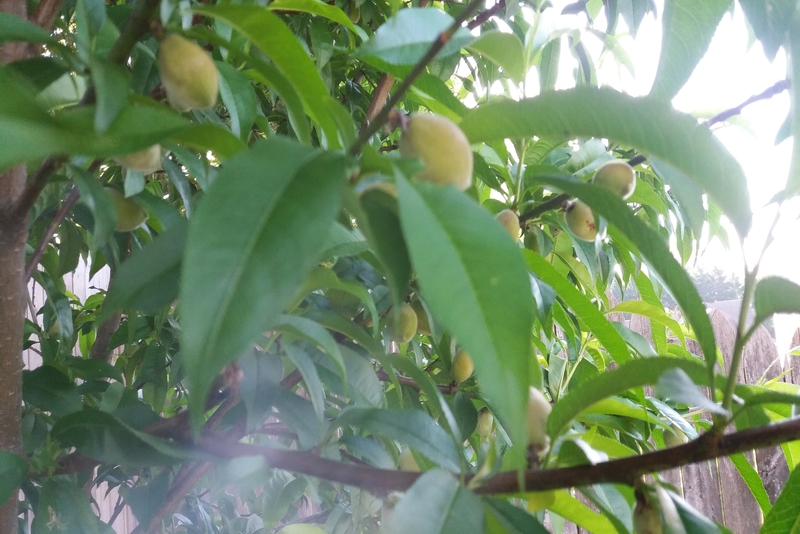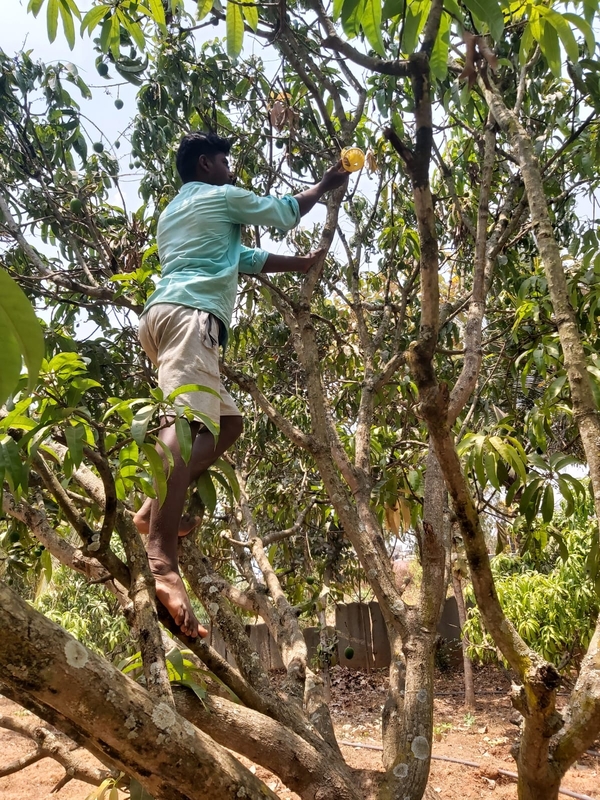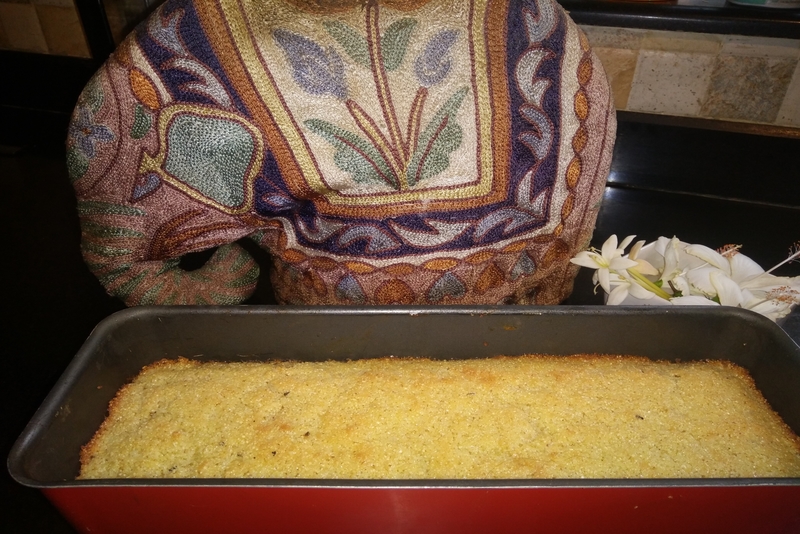Netting the peach tree in Tennessee

We face a conundrum in Tennessee. We buy bags of expensive birdseed from COSTCO and I put out one large glass into the bird feeder everyday. Then we all enjoy watching the birds fly in and out eating up the seed -- the spectacular scarlet Cardinals, tufted tit- mice who look like my kids in college, sparrows, cowbirds, mourning doves and different types of finches. We are lucky to see the odd woodpecker cling to the feeder and try and get at some of the seed. Ofcourse the most unwelcome is the large, fluffy tailed, mute squirrel who comes to gobble up the sun flower seeds and gets chased off.
However the wildlife cannot tell the difference between your fruit trees and wild trees that have fruit. For two years straight the family has lost every single peach from their peach trees so this year we decided to do something about it. I mean, we were welcoming the birds into the garden with the bird feeder, so how could we stop them from eating up whatever else they felt like.
“Netting is one way to protect your fruit from hungry birds and squirrels while still allowing light and air into the tree's canopy. Knowing when and how to cover your trees helps you keep the fruit produced by the fruit trees instead of it being lost to the wild life around your home,” said the man who ran the nursery from where the trees were bought as saplings.
This was a learning curve for us so we listened to the experts. “The material you choose for netting must be flexible enough to drape over the tree's canopy. It needs to be lightweight so it does not damage delicate branches, and it should have holes that measure between 1/4 and 1/2 inch wide. These holes admit sunlight to the tree's leaves so it can continue to make food for itself.” So we went to look for plastic mesh netting that is designed to protect fruit trees at garden centers. Finally like all millenials do, the kids got the best deal, on the net, from Amazon.
After all we all had worked all season long to grow our harvest and the trees were loaded with young fruit, after the spectacular flowering. However knowing when to cover the fruit trees with netting is important. Friends told us that we cannot keep the tree covered for the entire growing season because we could block pollinators from reaching the flowers. We had to wait till just after pollination when the fruit begins to appear in its green form on the tree. Then use netting to cover the tree to protect the fruit as it grows and ripens.
To install netting, the instructions said --you have two options. You can make a frame to hold the netting away from the branches or you can drape the net directly over the tree. Using a frame keeps birds from pecking at fruit on the outside of the tree that would be against a netting that was draped over the canopy. Making a frame takes time and it must be done for all of your fruit trees. When you choose to drape the netting over the tree, tie it around the trunk to keep squirrels or birds from getting to your fruit or nuts from the trunk of the tree.
However we are sure netting is not the perfect solution for every fruit tree. It can be difficult to install, especially when you have a large fruit tree. Every time you harvest, you must remove the netting and replace it to protect any fruit left to continue to ripen on the tree. Since the net has been tied down with tags they will have to be cut through, to get at the ripe fruit. But that’s a small task when we can save some fruit for ourselves, which is the idea of the net.
However the wildlife cannot tell the difference between your fruit trees and wild trees that have fruit. For two years straight the family has lost every single peach from their peach trees so this year we decided to do something about it. I mean, we were welcoming the birds into the garden with the bird feeder, so how could we stop them from eating up whatever else they felt like.
“Netting is one way to protect your fruit from hungry birds and squirrels while still allowing light and air into the tree's canopy. Knowing when and how to cover your trees helps you keep the fruit produced by the fruit trees instead of it being lost to the wild life around your home,” said the man who ran the nursery from where the trees were bought as saplings.
This was a learning curve for us so we listened to the experts. “The material you choose for netting must be flexible enough to drape over the tree's canopy. It needs to be lightweight so it does not damage delicate branches, and it should have holes that measure between 1/4 and 1/2 inch wide. These holes admit sunlight to the tree's leaves so it can continue to make food for itself.” So we went to look for plastic mesh netting that is designed to protect fruit trees at garden centers. Finally like all millenials do, the kids got the best deal, on the net, from Amazon.
After all we all had worked all season long to grow our harvest and the trees were loaded with young fruit, after the spectacular flowering. However knowing when to cover the fruit trees with netting is important. Friends told us that we cannot keep the tree covered for the entire growing season because we could block pollinators from reaching the flowers. We had to wait till just after pollination when the fruit begins to appear in its green form on the tree. Then use netting to cover the tree to protect the fruit as it grows and ripens.
To install netting, the instructions said --you have two options. You can make a frame to hold the netting away from the branches or you can drape the net directly over the tree. Using a frame keeps birds from pecking at fruit on the outside of the tree that would be against a netting that was draped over the canopy. Making a frame takes time and it must be done for all of your fruit trees. When you choose to drape the netting over the tree, tie it around the trunk to keep squirrels or birds from getting to your fruit or nuts from the trunk of the tree.
However we are sure netting is not the perfect solution for every fruit tree. It can be difficult to install, especially when you have a large fruit tree. Every time you harvest, you must remove the netting and replace it to protect any fruit left to continue to ripen on the tree. Since the net has been tied down with tags they will have to be cut through, to get at the ripe fruit. But that’s a small task when we can save some fruit for ourselves, which is the idea of the net.

Related Articles
Editor's Picks Articles
Top Ten Articles
Previous Features
Site Map
Content copyright © 2023 by Marianne de Nazareth. All rights reserved.
This content was written by Marianne de Nazareth. If you wish to use this content in any manner, you need written permission. Contact Marianne de Nazareth for details.





 -resizeimage.jpg.jpg)

